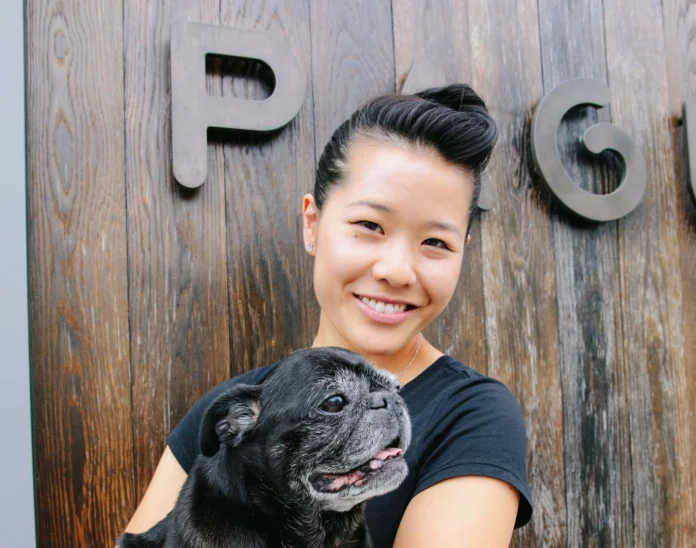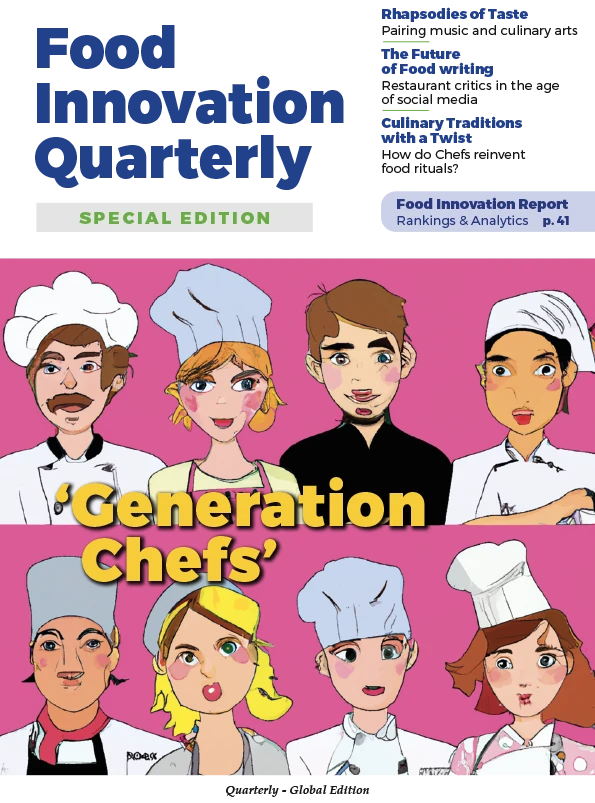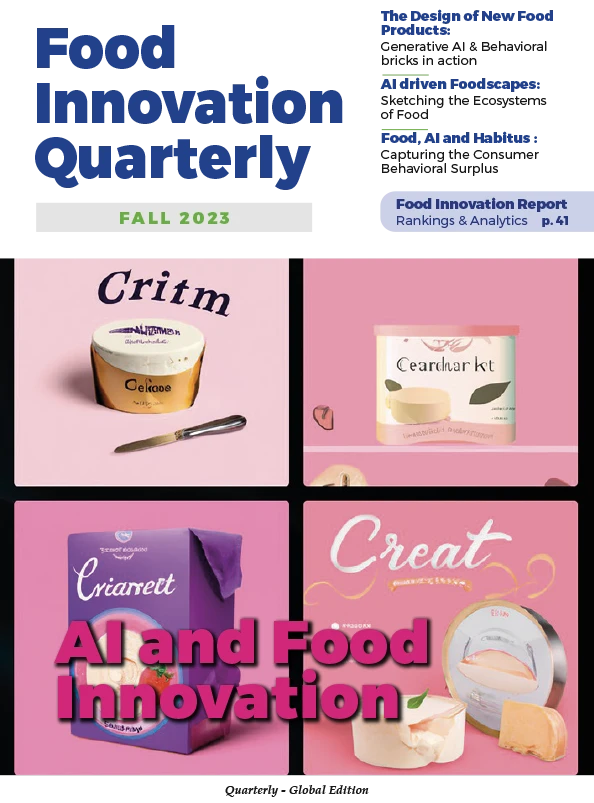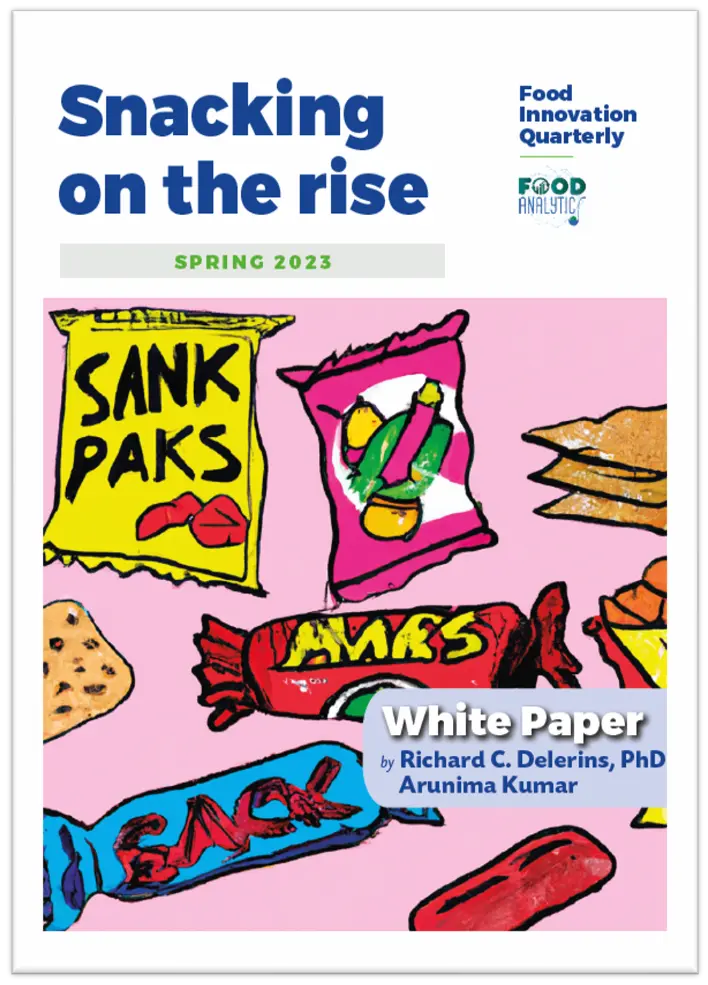The unusual career path of American chef Tracy Chang began with medical studies, then finance, but her love for cooking superseded it all. After a stint at Boston’s sushi restaurant “O Ya”, she went on to study pastry at “Le Cordon Bleu” in Paris, then won a scholarship to cook alongside chef Martín Berasategui, in his three-star Michelin restaurant in San Sebastian, Spain. But was this the end of the story or the beginning of the adventure? Returning to Boston, the chef co-founded Guchi’s Midnight Ramen, a pop-up restaurant that quickly became a cult favourite, before opening her own establishment in 2017. PAGU was born. Today it offers its customers the cuisine of a chef who is equal parts international experiences and the heritage of her grandmother.
Food Innovation Quarterly : Let’s rewind your career. How did you come to open your own restaurant?
Tracy Chang: My grandmother owned a restaurant when I was a kid. I have very fond memories of that time. It was pretty obvious to me that if I opened my own restaurant, I was going to find the warm atmosphere, the excellent food, the kindness of the employees and the customers. I was less than ten years old, the memories that I have are obviously very positive… I wasn’t really able, at that time, to understand the negative aspects!
FIQ : If you created your establishment inspired by your grandmother, you put a lot of yourself into it…
T.C. : Yes, I believe! Opening a restaurant in 2016 is indeed not the same as doing it in 1988, as well as exercising a career as a chef or restaurateur. I think that’s why I was able to convince my family that this was not just a hobby, and that a career in this field had real value. Getting with the times
FIQ : You are often defined as a millennial. What does that mean to you?
T.C. : To tell you the truth, not much. Even though I was born in 1987, I consider myself more of a grandmother, or rather “an old soul” (laughs).
FIQ : Do you consider the current consumption patterns?
T.C. : I think that our restaurant is successful precisely because we listen to our community. It’s good to constantly evolve our menu, our products or the way we receive our guests. But it can only work if we know what is happening elsewhere. This knowledge is even more important in a restaurant like ours, which has a hundred places!
If we served only 10 or 20 guests, we could perhaps apply strict rules: “Here we only serve one dish, and we only pay in cash”. But our clientele is diverse and expectations vary from one customer to another: some people eat in forty minutes while others may stay for two to three hours; We have people on their own or in groups; some are vegetarian or vegan, some have food intolerances or allergies, and others will only eat meat and potatoes… If we wish to have them in our establishment, we have to be able to please everyone. We even printed a “gluten free” menu, a “vegan” menu etc. The customers feel reassured when they discover that the menus are tailored & healthy.
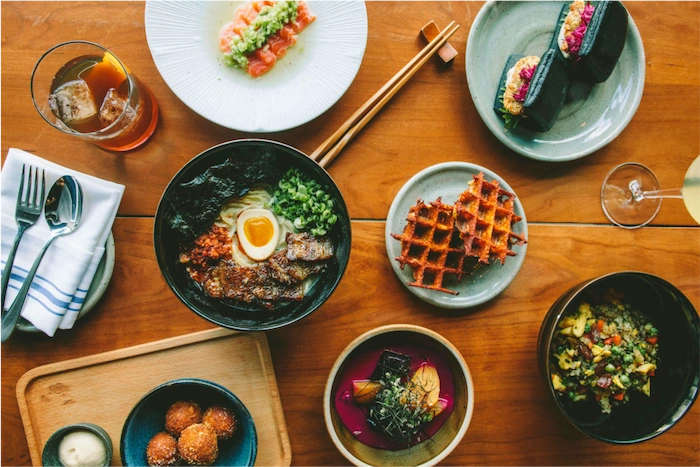
FIQ : Do you think that people now eat more consciously?
T.C. : Of course! And Cambridge, MA is an excellent laboratory to observe this! I often talk about it with friends and colleagues. Like many of them, I don’t think we’re facing a short-lived ephemeral trend. People want to know what they are eating and the consequences that their food has on their metabolism. In the past, I have worked with people who did not believe that clients could actually be allergic. I find this counterproductive… and dangerous. More generally, I feel that our clients have developed a real erudition for food: whatever the product, they always want to know how it was produced. And I notice that this phenomenon is now tending to extend to wines as well.
FIQ : As a chef, what do you think about this penchant of customers to photograph their dishes all the time?
T.C. : I think that sometimes we could do a lot better if we changed the lighting!
On a more serious note, when I see people taking pictures, I tell myself that it is a sign of interest in what we do, and who we are. It allows them to keep a memory and to share it with their contacts on the networks. The sharing of content seems to me rather as an extension of their relationship with the restaurant: it’s their way of applauding.
Let’s not forget that we work in a profession where exchanges can be rare. Once the task is completed, the staff goes back behind the scenes. The idea of having an open kitchen is a way for us to encourage exchanges between the kitchen and the dining room.
FIQ : Do you listen to your customers via social networks? How do you use this new media?
T.C. : Indeed, I personally take care of our Facebook and Instagram page along with a team member. When I entered the profession, all this did not yet exist. Then, one day, Twitter, Facebook and Instagram came along. At the time, I was running my pop-up restaurant and I have to say that using these media gave me a big boost! The photos that my team and I shared of our ramen allowed us to get known by an audience that was just starting to discover social networks. Today, this question does not arise: this is part of our work and gives us the possibility to communicate with our community, so yes, we love to do it!
A Fusion of Tradition, Innovation… & Pop Culture
FIQ : How would you define the cuisine you serve at PAGU?
T.C. : I often hear that our cuisine is a fusion of Spanish and Japanese inspirations. This is a bit reductive and ultimately rather sterile. If the dish is good, why try to link it to any cuisine at all? The concept of PAGU is very simple: to make people want to come because they are convinced that what we offer is good. Certainly, Spanish and Japanese cuisine are important in my career… as are Taiwanese and Thai influences. It is not by chance that the pork belly bao is our biggest success! This mix reflects my background and my cultural heritage.
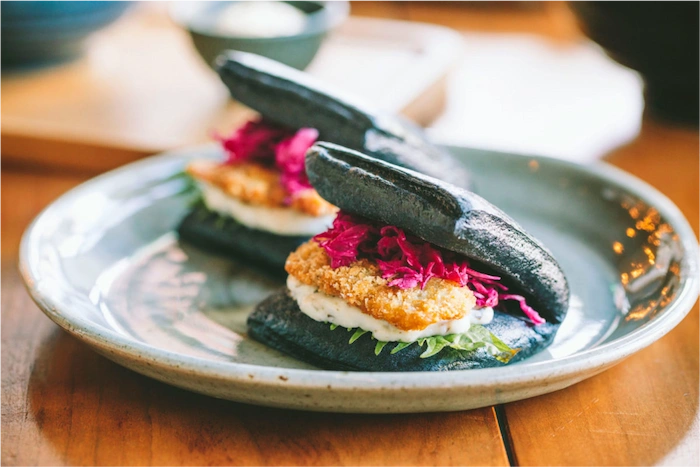
FIQ : You studied pastry in Paris. In your daily work, do you draw on your French training?
T.C. : What I retain from my training in France is essentially the technique, especially in pastry making. But I also learned about French culture, the way the French appreciate food, the time dedicated to cooking and the fact that we all share a meal together.
In France, people have a real relationship to culinary culture, it says a lot about their way of living. When they leave in the morning to buy bread and croissants, it’s very important for them to choose the right bakery, it’s their way of starting the day. If we see them lining up in many institutions, each place is important to everyone in the queue. People like to get their baguettes in a particular bakery, and their cheese in a dairy, never in the same place, whereas in the United States they are used to going to the same store to find the products they need for the month, without having to come out of their homes. This is one of the things I have most enjoyed in Paris.
FIQ : Some of your dishes have a very “pop” aesthetic…
T.C. : It’s possible… but without ever forgetting the tradition! Without it, any trend is doomed to be ephemeral. The “Pork Belly Bao that we serve is a very good example. Our efforts to make it appetizing, “pop” as you say, is about a classic Taiwanese street food dish. Without tradition, there is no innovation!
FIQ : In recent years, the colour pink has made its appearance in the world of cooking. Are you/PAGU susceptible to this?
T.C. : Today, for a dish to be desirable, it has to be Instagrammable. Bright colours like pink are becoming essential for us chefs because they allow us to attract attention of the eaters. When we created our squid ink oyster bao, for example, we played on the contrast between the black colour of the steamed bread and the bright pink of the pickled cabbage that accompanies the crispy oyster. The same goes for our frozen and smoked yogurt with purple yam, or our hibiscus-based cocktails. So yes, at PAGU, we love pink! “Today, for a dish to be desirable, it has to be Instagrammable.”
FIQ : Do you consider yourself an innovative chef?
T.C. : Sometimes (laughs). Paradoxically, my creativity is expressed less in the restaurant than with my friends. It’s when I’m cooking with them that I feel curious, that new ideas come to me, and that I think of new dishes. Rather than saying, “I just came back from Lisbon and I had a great idea after eating in such and such neighbourhood…”, it is more the people around me that inspire me, scientists, teachers, students, artists, entrepreneurs, people who work in high technology…
FIQ : You talk about High Tech. What do you think of the ‘plant-based meats’ that are currently being developed?
T.C. : Personally, I have tried two popular brands on the American market, Beyond Meat and Impossible Burger. For both brands, I must admit that I did not “click” with either of them. I was not thinking, “I absolutely want to try this again.” As for offering them at PAGU, it’s not in the cards yet! The interest that these innovations have aroused, much like the interest in cannabis products, has perhaps put transparency on the back burner. I’m torn between wanting to enjoy testing a new product and not knowing what it is, how it’s processed, and whether it’s ultimately healthy. I don’t really share the current enthusiasm and I think the government will be obliged to put in place a stricter regulation of the sector.
FIQ : As someone who learned a lot from their training, do you also pass on your knowledge via teaching?
T.C. : Paradoxically, I cook a lot more when I’m not in the restaurant! In fact, I love cooking with other people. Some customers have become friends with whom I cook regularly and they don’t hesitate to ask me for advice. This often ends up in the form of dinners at the homes of some or others that I consider as workshops. We all cook together to make the best taco, or the best soup, and sometimes we continue these challenges by organizing these events directly at PAGU. And when we come up with an interesting result, we don’t hesitate to put them on the restaurant’s menu!
Interview by Cyprien Rose for Food Innovation Quarterly


